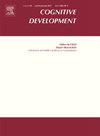加工速度缺陷、发展性阅读障碍与中文书写:叙述回顾
IF 1.8
3区 心理学
Q3 PSYCHOLOGY, DEVELOPMENTAL
引用次数: 0
摘要
在这篇扩展的综述中,我们研究了将汉语阅读障碍、处理速度和书写结果联系在一起的理论框架,然后将这些讨论锚定在20多年来广泛的经验证据中。我们首先描述了中国文字的独特特征,它的单音节文字,高度的视觉复杂性,以及对书写练习的强调,如何创造了广泛的基于速度的需求。接下来,我们探讨了快速自动化命名(RAN)和基于大细胞的时间处理模型的作用,阐明了这些领域的缺陷如何阻碍识字习得。然后,我们将这些结构与手写联系起来,重点关注抄写、听写和自由书写任务如何暴露或加剧速度缺陷。在整个过程中,我们结合了最近的神经影像学发现,并讨论了关键的理论观点,包括双赤字假说和对大细胞框架的批评。随后,我们重点介绍了华语地区的循证干预措施和应急政策方法。最后,我们确定了未来研究的关键方向,包括纵向设计跟踪阅读困难儿童的写作流畅性,跨语言研究阐明速度如何与形态意识相互作用,以及更深入的神经生物学研究涉及手写的背-腹侧通路。本文以汉语阅读障碍的加工速度缺陷为背景,对汉语阅读障碍的加工速度和书写证据进行了全面的综合叙述,回答了这个问题,并解释了速度缺陷是如何转化为书写困难的。本文章由计算机程序翻译,如有差异,请以英文原文为准。
Processing speed deficits, developmental dyslexia, and handwriting in Chinese: A narrative review
In this expanded review, we examine the theoretical frameworks tying together Chinese dyslexia, processing speed, and handwriting outcomes and then anchor these discussions in a broad range of empirical evidence spanning over two decades. We first describe how Chinese literacy’s unique characteristics, its monosyllabic script, high visual complexity, and emphasis on handwriting practice, create extensive speed-based demands. Next, we explore the role of rapid automatized naming (RAN) and magnocellular-based temporal-processing models, illuminating how deficits in these areas could impede literacy acquisition. We then connect these constructs to handwriting, focusing on how copying, dictation, and free-writing tasks expose or exacerbate speed deficits. Throughout, we incorporate recent neuroimaging findings and debate key theoretical perspectives, including the double-deficit hypothesis and critiques of the magnocellular framework. Subsequently, we highlight evidence-based interventions and emergent policy approaches in Chinese-speaking regions. We conclude by identifying critical directions for future research, including longitudinal designs that track dyslexic children’s writing fluency over time, cross-linguistic investigations clarifying how speed interacts with morphological awareness, and deeper neurobiological inquiries into the dorsal-ventral pathways implicated in handwriting. By foregrounding processing-speed deficits in Chinese dyslexia, this review provides a comprehensive narrative synthesis to integrate processing-speed and handwriting evidence in Chinese dyslexia, answering the question and explaining how speed deficits translate into handwriting difficulties.
求助全文
通过发布文献求助,成功后即可免费获取论文全文。
去求助
来源期刊

Cognitive Development
Multiple-
CiteScore
3.20
自引率
5.60%
发文量
114
期刊介绍:
Cognitive Development contains the very best empirical and theoretical work on the development of perception, memory, language, concepts, thinking, problem solving, metacognition, and social cognition. Criteria for acceptance of articles will be: significance of the work to issues of current interest, substance of the argument, and clarity of expression. For purposes of publication in Cognitive Development, moral and social development will be considered part of cognitive development when they are related to the development of knowledge or thought processes.
 求助内容:
求助内容: 应助结果提醒方式:
应助结果提醒方式:


